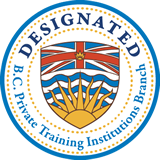 |
|
Landing/Takeoff Considerations, Part V: Surface
“There is a way that nature speaks, that land
speaks. Most of the time we are
simply not
patient enough, quiet enough, to pay attention to the story.”
--Linda Hogan—
The
surface we use for takeoff or landing has a significant effect on
the distance required to achieve our desired goal. Smooth, paved
runways provide the least rolling resistance to aircraft movement
and the most positive braking efficiency giving us the best takeoff
and landing performance available. Grass, gravel, dirt, snow, ice or
standing water all increase rolling resistance and impede braking
efficiency.
On
takeoff, the two major retarding forces are rolling resistance and
aerodynamic drag. To minimize the negative effects of these two
forces it is helpful to understand how they work and what we, as
pilots, can do to mitigate their negative effects on aircraft
performance to achieve a safe and controlled takeoff.
On
a normal takeoff from a smooth, paved surface, rolling resistance,
the amount of resistance the landing gear experience during
acceleration from stand-still to flying speed as a result of
interaction with the surface, is minimal. To achieve a minimum
ground roll, we work to maximize the acceleration rate of our
aircraft from stand-still to flying speed, and during acceleration
we work to minimize the amount of aerodynamic drag we induce until
we are very close to flying speed.
During the takeoff roll, the dynamics of the forces involved change
as the aircraft accelerates. As an aircraft accelerates, rolling
resistance is reduced as a function of lift production—more of the
aircraft’s weight is supported by the wings—and aerodynamic drag is
increases as a function of the square of the speed.
Typically, to achieve a minimum ground run takeoff from a smooth,
paved surface, we will apply minimum flap, if we are so equipped, as
per the POH. This helps increase lift as soon as possible as we
accelerate which reduces rolling resistance. Too much flap will
disproportionately increase aerodynamic drag and retard our
acceleration. We apply full power, confirming we have achieved full
power and our engine gauges are showing the correct indications, and
maintain the aircraft in a level attitude to minimize drag as much
as possible as it accelerates.
At
minimum flying airspeed, generally the bottom of the white arc on
the airspeed indicator, we lift the aircraft off the surface and
immediately level off in ground effect allowing the aircraft to
accelerate to safe flying speed, normally a minimum of Vx, prior to
initiating climb.
On
takeoff from a smooth, paved surface, rolling resistance is minimal.
Aerodynamic drag is the key retarding force. On a rough or difficult
surface, rolling resistance becomes the key retarding factor.
Aerodynamic drag is still a retarding factor, but resistance to
acceleration caused by the surface is of considerably more
importance, particularly during the early stages of the takeoff
roll.
Rolling resistance is calculated using the formula R = μ(W - L)
where R represents rolling resistance, μ represents the coefficient
of resistance, W represents the weight of the aircraft and L
represents lift.
For
aircraft with a power loading in the range of 10-16 lbs per HP—a
C-172 at gross weight has a power loading of 15.33 lbs per HP
(2300lbs/150 HP)—some basic rules of thumb for operations at sea
level are (1):
Takeoff Surface μ Required Takeoff Roll
Concrete or Asphalt 0.02 POH figure
Firm turf 0.04 POH figure + 7%
Short grass 0.05 POH figure + 10%
Tall grass 0.10 POH figure + 25%
Soft field, deep snow 0.10 – 0.30 POH figure + 25% - infinity
We
can see from the table that even short grass increases the
resistance coefficient by 250% over that experienced on a paved
surface. Tall grass increases the coefficient by 500%.
In
high density altitude conditions when the engine is unable to
develop full power, the power loading—the ratio of weight to HP—is
increased, decreasing the net accelerating force (NAF)—the
difference between thrust available and total retarding
force—increasing takeoff distance. If our power is reduced by high
density altitude or any other reason, our NAF is also reduced and
our total distance to achieve a takeoff is increased.
At
higher levels of μ the aircraft may not be able to develop
sufficient thrust to even begin its takeoff roll. If we take our
C-172, for example, which, standing still, develops something in the
neighbourhood of 400 lbs of thrust (2), and position it on a soft,
muddy field or in snow and plug the numbers into our formula, R =
μ(W - L), we see that rolling resistance might easily exceed
available thrust (R = 0.3(2300 – 0) = 690 lbs).
We
better hope we can find a few, strong friends to help us get the
aircraft out of the situation in which we’ve positioned it. It
simply isn’t going to move on its own.
The
technique we use for takeoff on a difficult surface is somewhat
different than that employed on smooth pavement. Depending on the
surface, we are also faced when flying a tricycle gear aircraft with
the problem of protecting the vulnerable nose gear assembly. For all
aircraft, we must protect the propeller and the rest of the aircraft
from debris that may be picked up and thrown by the propeller as
thrust is increased.
The
recommended technique is to apply appropriate flap, as per the POH,
gently increase power as the aircraft accelerates, maintain a nose
up attitude to both increase lift production and protect the nose
gear of the aircraft, and allow the aircraft to lift off as it
develops sufficient lift to overcome weight. The degree of nose up
attitude depends on the resistance coefficient of the surface:
higher the resistance coefficient, higher nose up attitude, within
the bounds of safety. It’s important to be able to see where you are
going throughout the takeoff process.
Most light aircraft POHs will give us data applicable to what they
refer to as a “dry grass” surface. For the C-172, the figures
provided in the POH indicate our takeoff ground roll will be
increased by approximately 15% above the distance calculated for a
given density altitude when operating on paved surface.
Using the coefficient provided in the POH, if our normal takeoff
roll at sea level under standard conditions is approximately 900’,
taking off on a “dry grass” surface will require just over 1000’ to
achieve lift-off (900’ x 1.15 = 1035’). We could also say a grass
surface effectively shortens our available runway by 15%, a 1200’
runway will give us an effective length, a performance
length, of only just over 1000’ (1200’ x .85 – 1020’).
It
is important to remember, however, that this figure does not take
into consideration any additional resistance that may result from
actual conditions. If the grass is wet or higher than “normal” or if
the underlying surface is muddy or bumpy the takeoff roll distance
may be considerably increased. Deal with the reality no matter what
the book may say; ensure there is sufficient distance to execute a
safe takeoff.
When taking off on surfaces with high rolling resistance our best
method of mitigating the retarding force is to allow the aircraft to
develop as much lift as possible as soon as possible to reduce the
aircraft’s contact weight, the amount of weight supported by the
landing gear. We would like to transfer the weight of the aircraft
from the wheels to the wings as soon as possible consistent with
safety.
It’s a good plan to remember that the aircraft POH figures are
developed using new aircraft and highly skilled pilots. They also
tend to be a bit on the optimistic side to impress potential buyers.
Your aircraft may not be quite so new; your piloting skills may not
quite match those of the professional pilots employed to test new
aircraft by the Cessna or Piper or Grumman corporations.
Even if the calculations show things will work, it isn’t a bad plan
at all to remember the 50/70 rule: if you haven’t achieved 70% of
your lift-off speed at 50% of the usable runway length, abort. I
also like the Rule of Thumb expressed in From the Ground Up:
“Lift off speed should be reached within the first 75% of the usable
runway. If lift-off has not been achieved in this distance, the
take-off should be aborted.” (3)
There is no sense bending a perfectly good airplane just because the
answer we arrived at with our calculations turns out to be too
optimistic.
Being able to use small, unpaved landing surfaces successfully opens
up a number of interesting possibilities for potential destinations.
Learning how to best mitigate the negative effects of these landing
surfaces and to maximize the potential of your aircraft allows you
access. It’s also improves your flying skills and is great fun.
Notes:
|


